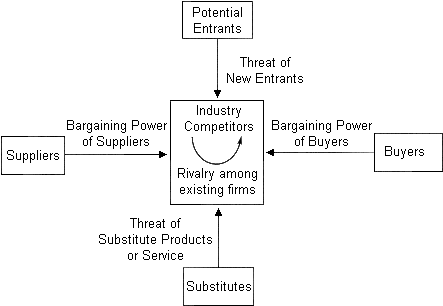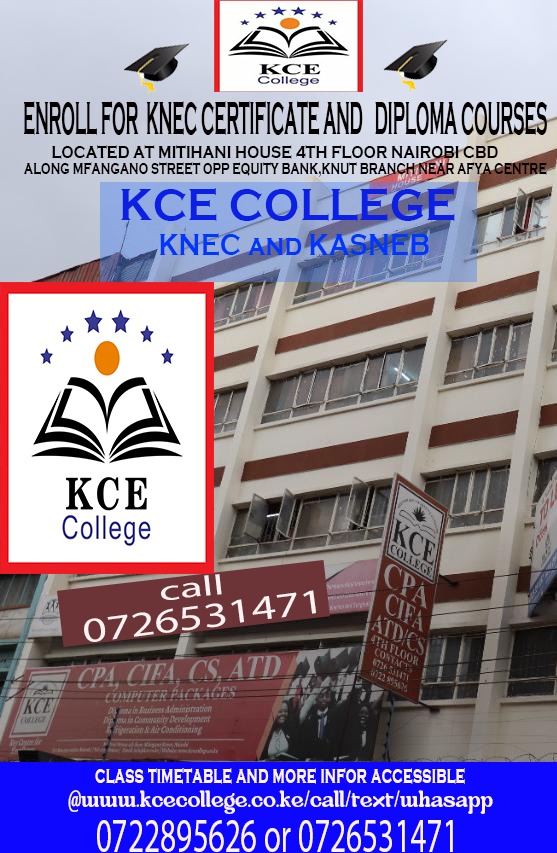

In Porter’s view, an organization’s ability to compete in a given market is determined by that organization’s technical and economic resources, as well as by five environmental “forces,” each of which threatens the organization’s venture into a new market. The strategic manager, says Porter, must analyze these forces and propose a program for influencing or defending against them. The aim is to find a lucrative and defensible niche for the organization.
Michael Porter has identified five forces that determine the intrinsic long-run profit attractiveness of a market or market segment: industry competitors, potential entrant, substitutes, buyers and suppliers. These forces are all relationship between the managers at a given organization and people acting at other organizations. The threats posed by these forces are:
1. Threat of new entrants: A segment’s attractiveness varies with the height of its entry and exit barriers. The most attractive segment is one in which entry barriers are high and exit barriers re low. Few new firms can enter the industry, and poor performing firms can easily exit. When both entry and exit barriers are high, profit potential is high, but firms face more risk because poorer-performing firms stay in and fight it out. When both entry and exit barriers are low, firms easily enter and leave the industry, and the returns are stable and low. The worst case is when entry barriers are low and exit barriers are high: here firms enter during good times but find it hard to leave during bad times. The result is chronic overcapacity and depressed earnings for all.
The best defense is to keep an eye on what prospective entrants might do to enter/expand their presence into new markets
2. Threat of buyers’ (customers’) growing bargaining power: A segment is unattractive if the buyers possess strong or growing bargaining power. Buyers’ bargaining power grows when they become more concentrated or organized, when the product represents a significant fraction of the buyers’ costs, when the product is undifferentiated, when the buyers’ switching costs are low, when buyers are price sensitive because of low profits, or when buyers can integrate upstream. To protect themselves, sellers might select buyers who have the least power to negotiate or switch suppliers.
The best defenses consist of developing superior offers that strong buyers cannot refuse, keeping prices within x percent of competitor prices for similar services/goods and seeking new variations delivery services; “next day” might not suit everyone’s budget.
3. Threat of suppliers’ growing bargaining power: A segment is unattractive if the company’s suppliers are able to raise prices or reduce quantity supplied. Suppliers tend to be powerful when they are concentrated or organized, when there are few substitutes, when the supplied product is an important input, when the cost of switching suppliers are high, and when the suppliers can integrate downstream. The best defenses are to build win-win relations with suppliers or use multiple supply sources, discuss operating plans for acquiring new facilities, equipment or goods with the manufacturers/suppliers so as to get favourable prices and timely deliveries.
4. Threat of substitute products: A segment is unattractive when there are actual or potential substitutes for the product. Substitutes place a limit on prices and on profits. The company has to monitor price trends closely. If technology advances or competition increases in these substitute industries, prices and profits in the segment are likely to fall.
The best defense is to watch out for competing products, their quality, prices and dealer capacities in the marketplace.
5. Threat of intense segment rivalry(rivalry among competitors): A segment is unattractive if it already contains numerous, strong or aggressive competitors. It is even more unattractive if it is stable or declining, if plant capacity additions are done I large increments, if fixed costs are high, if exit barriers are high, or if competitors have high stakes in stying in the segment. Theses conditions will led t frequent price wars, advertisng battles, and new-product introductions, and will make it expensive to compete. The best defense is to watch out the advertising campaigns and monitor competing firms’ contracts.
